Shopping for solar panels is a daunting task. There are so many sizes, form factors, and brands as to make us want to throw up our hands and buy the first result on Amazon. And that can work, if solar is just one piece of your power puzzle. Yet, what solar panels one buys can be the key limiting factor for boondockers who plan to spend long periods off the grid and without a generator.
Power Sources
RVs have many potential power sources at their disposal. Most popularly, this is a combination of batteries and propane which can be supplemented by shore power, a generator, and solar panels. Of course there are variations with diesel and other fuels. But, for us, in the interest of safety and long term planning ,we have decided to go all electric. As boondockers, that means the solar panels are a central source of power for our camper.
Solar Options
Finding the right solar setup is a matter of determining how much power your need and how much space you have to generate it. With such a small truck camper, our greatest limiting factor for solar is simply roof space. So, we will start by planning out the potential layout of the roof and see how much solar we can potentially mount on the roof.
Roof Dimensions
The dimensions of our roof are quite variable. Unlike most campers with a square frame, the curved nature of our camper means that flexible pannels could, potentially, follow the curve of the roof and along the walls. The more the pannel covers, the more potential solar energy collected but it is also a scenario with diminishing returns.
So, when mapping out the roof of the Avion, I wanted to distinguish between most desirable and less desirable arrangements. The darkest gray section on this diagram represents the relatively flat top panel of aluminum. This is a prime location for solar panels but also the location of our roof hatch, fan, and planned sky light. Most solar panels need more space than that area alone allows.
So, we expand to the second most desirable section, denoted by the middle grey. I can easily mount 600 Watts of standard dimension solar panels using this region and the top of the roof.
Now, as we get to the lightest grey section, the curve of the roof is getting quite sharp and panels on this section will be fairly visible from the ground which, as a photographer, I’m not thrilled with but I am open to. If we open this section up to solar panels, then we could easily fit 800 watts worth of standard dimension solar panels.
As a side note, I’ve also included the location of the ribs supporting the roof as dashed lines. These are good indicators of the relative locations of potential items on the camper.
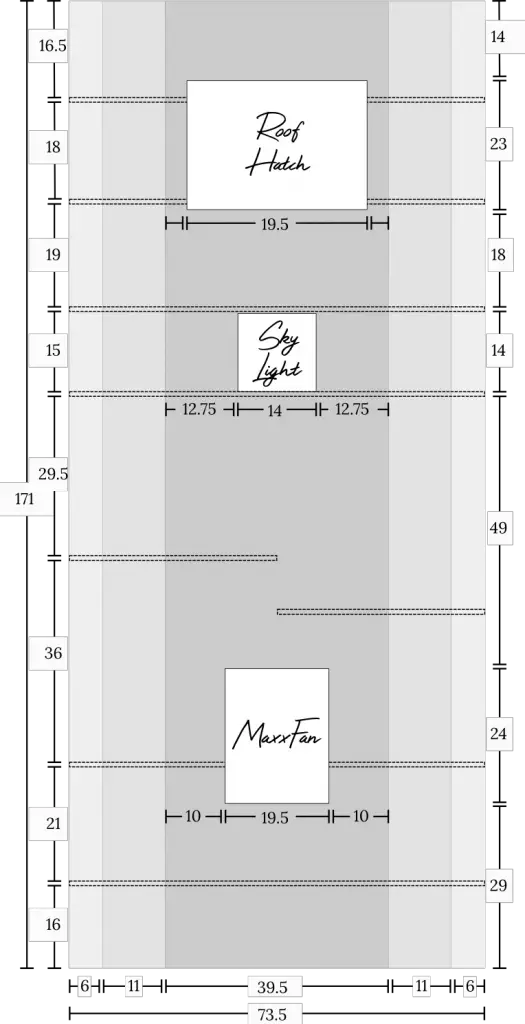
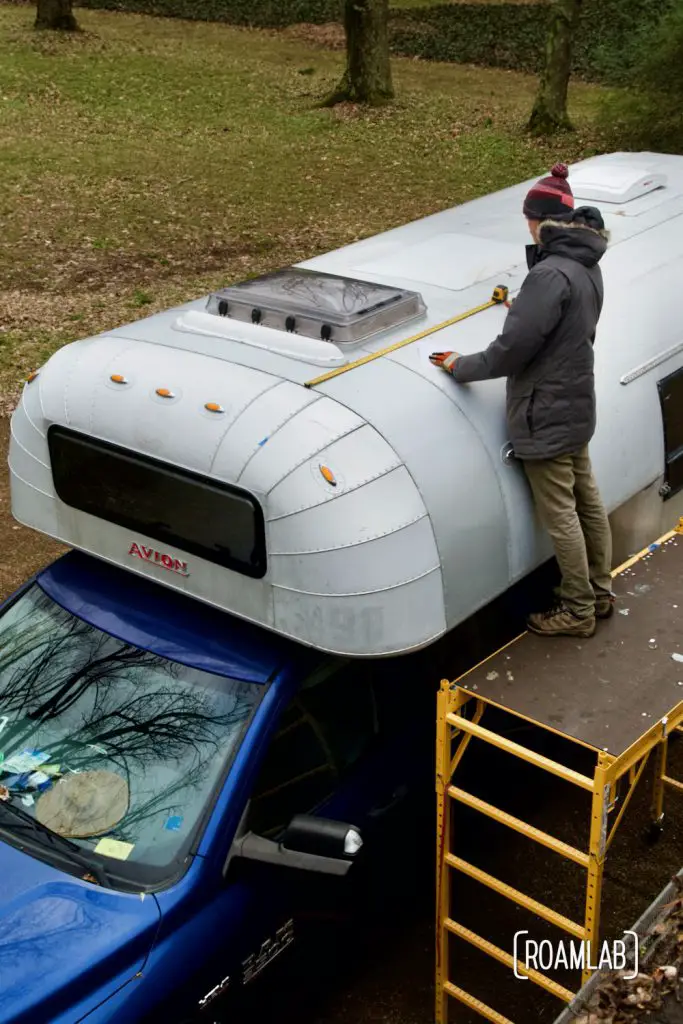
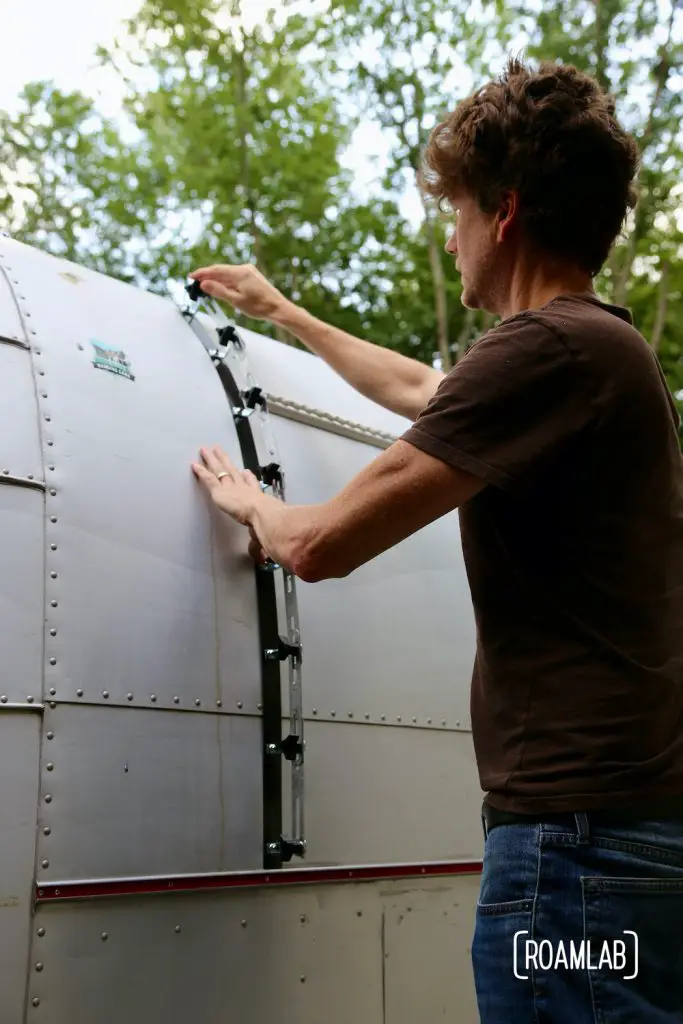
The Cutoff Point
As noted earier, determining the dimensions of the camper roof is a dicy situation. Unlike many truck campers and RVs, there is no clear spot at which the roof ends and the walls begin. The sloped design that makes the Avion body so airodynamic also means that the roof and walls fold into eachother. This has two implications when considering flexible solar panels:
- How much solar power can panels hope to collect when mounted on a curve / angle?
- How much curve can the solar panels be exposed to without causing damage?
In the case of no. 1, the curvature can be seen as a mixed blessing or curse. Following the sides of the camper could mean that more power can be collected in the morning and evening when the sun is at a greater angle. Granted, the power collected at that time of day is much less than at the height of noon because the rays travel through more of the earth’s atmosphere before reaching the solar panels. For the same reason that sunburns are more likely in the afternoon than morning or evening, solar power is more readily available at high noon. So, how far we cover the sides in this case is a cost/benefit assessment: balancing now much the extra panels cost versus the diminishing returns of solar at sharper angles.
In contrast, case no. 2 is a hard and fast limiting factor. If the curve becomes too sharp for a solar panel, then we simply cannot have the solar panel cover that section.
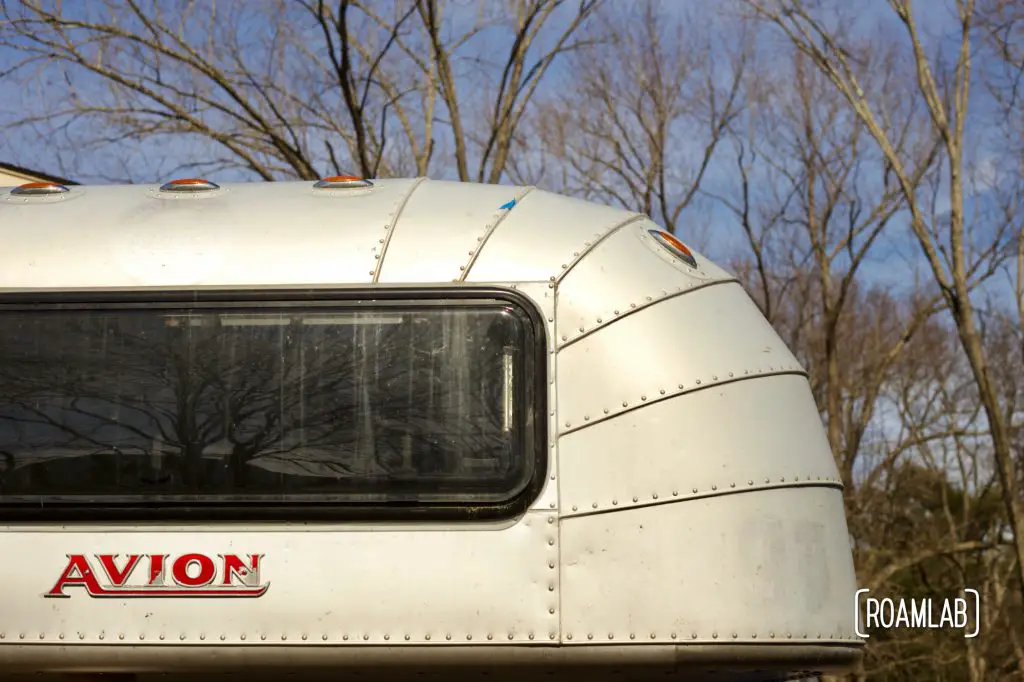
Measuring the Curve of the Avion’s Roof
So, step 1: we measure the curve of the roof and reach out to solar panels to get their input on the feasibility of using their panels on our curved camper. For this measurement, I am referencing the same zones laid out in Figure 1. Now, instead of flattening the roof to demonstrate the relative position of items on a curved surface, I am presenting a cross section of the roof to calculate the decreasing radius of the roof’s curve as it transitions to the Avion walls.

Of course, a diagram is helpful, but hard numbers are more meaningful. So, lets break out the two outlier options and calculate the curve radius for the 11-inch and 6-inch extension sections. To do this, we need the height and width of the curve and a handy little formula:
$latex d=H+\frac{W^2}{4H}&s=4 $
With this, we can now calculate the diameter of each curve:
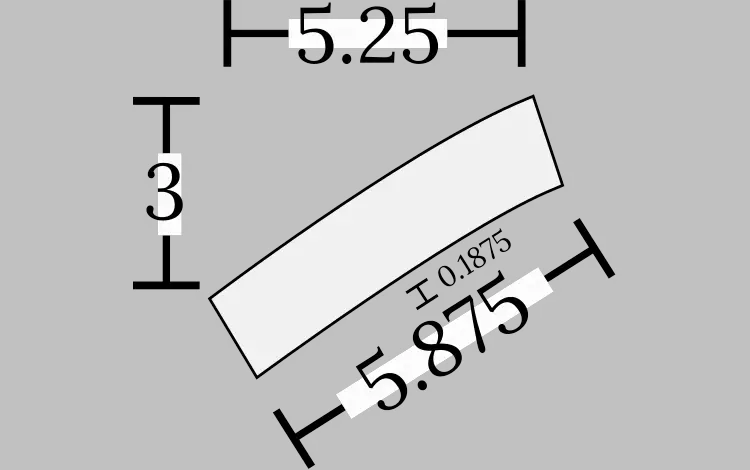
W=5.875
H=0.1875
$latex d=0.1875+\frac{(5.875)^2}{4(0.1875)}&s=4 $
d=46.208333333333336
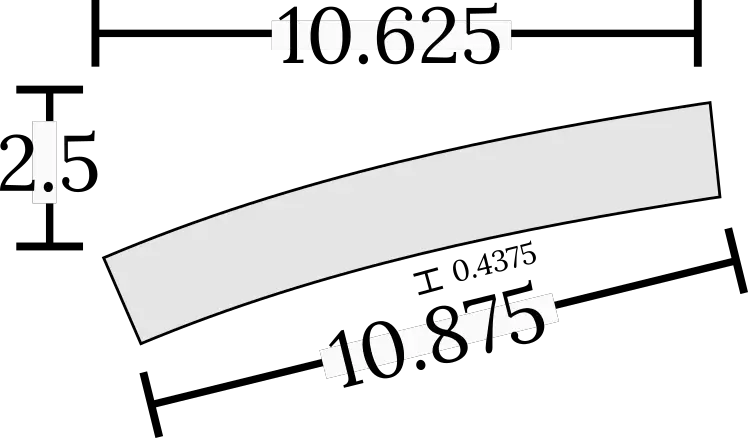
W=10.875
H=0.4375
$latex d=0.4375+\frac{(10.875)^2}{4(0.4375)}&s=4 $
d=68.01785714285714
The Layout
We have become quite smitten with a semi ridged solar panel. The super durable design seems perfect. The thin design can even be walked on. Except, there’s one problem: this design can’t take the curve of our camper. That isn’t to say we’ve abandoned the panels, though.
In talking with the manufacturer, we are looking at a mixed order: two semi ridged 110W solar panels for the top of the Avion and eight flexible 110W solar panels all with an extra durable ETFE covering. The new design pushes the flexible panes an additional 5.5-inches down each side of the Avion. But the total should support a whopping 1100Wh of solar energy on a good day.
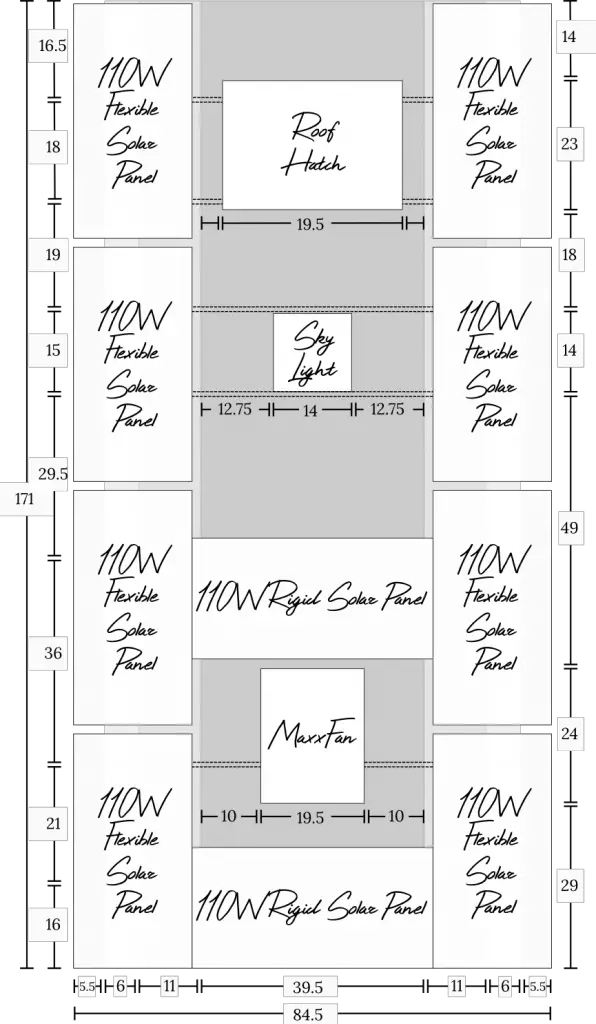
As with many of our posts, this is a work in progress. I’ll be updating this writeup as we move forward but please share your thoughts, experience, and questions in the comments below.
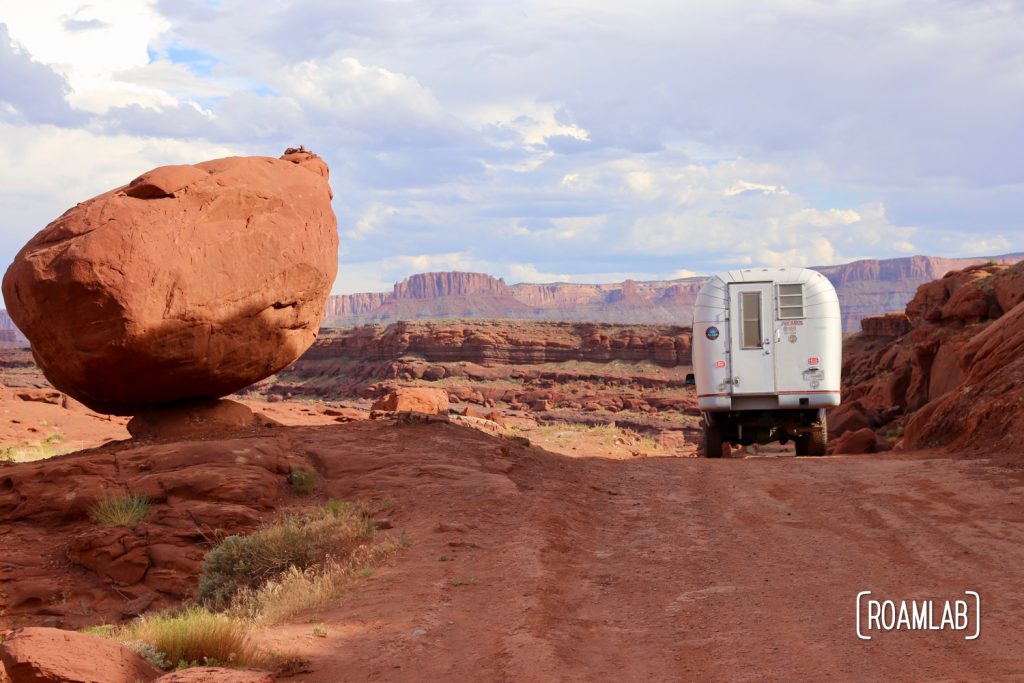


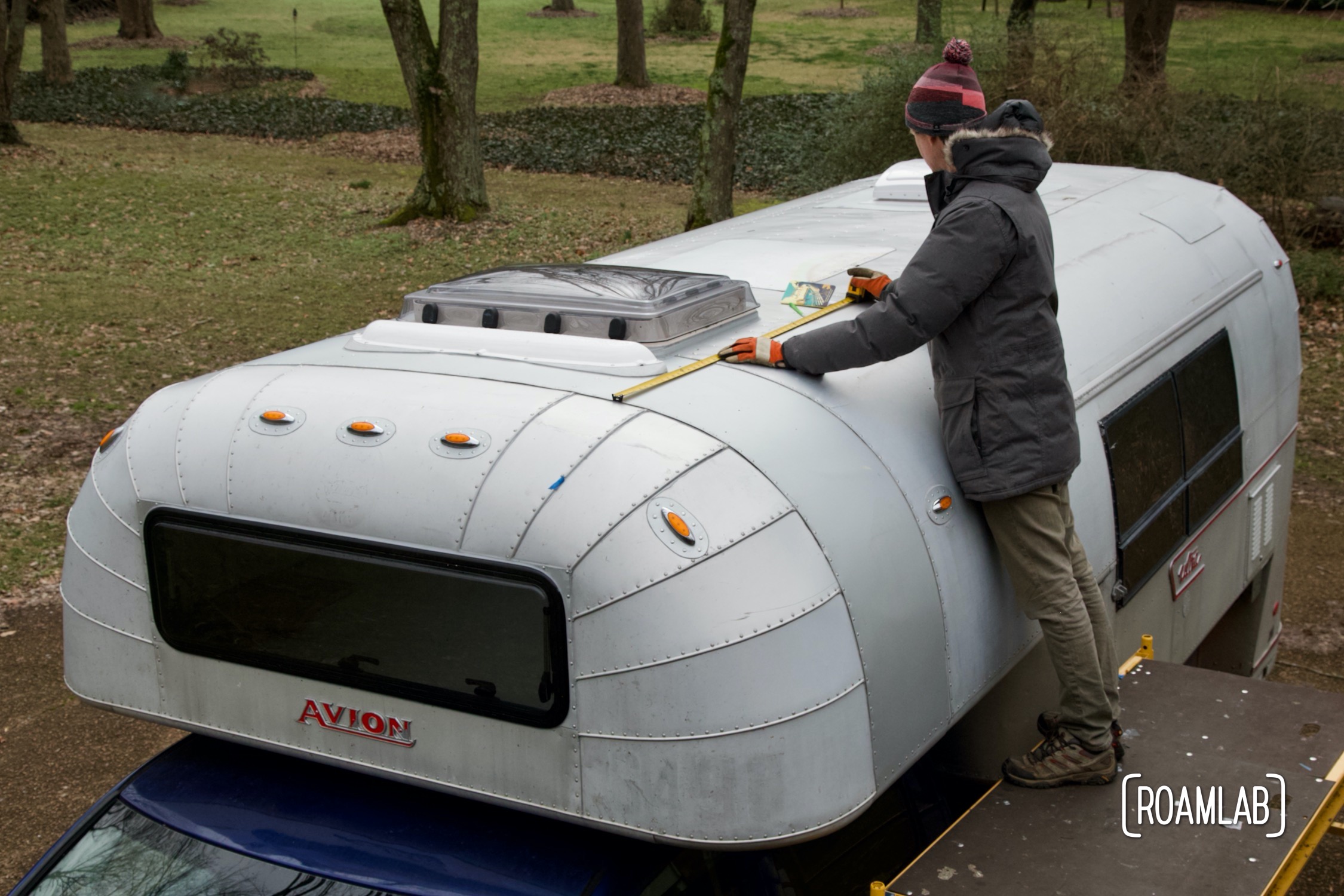
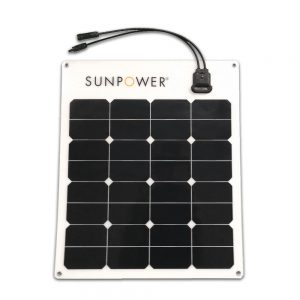
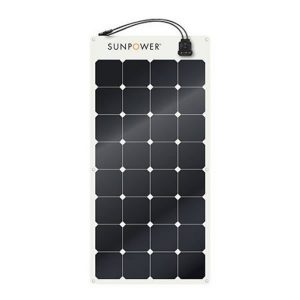
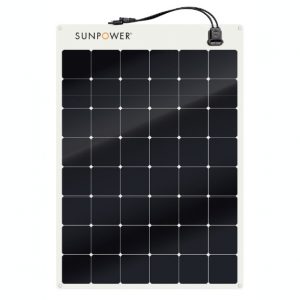
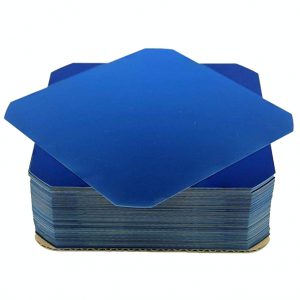
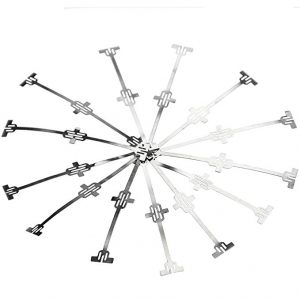
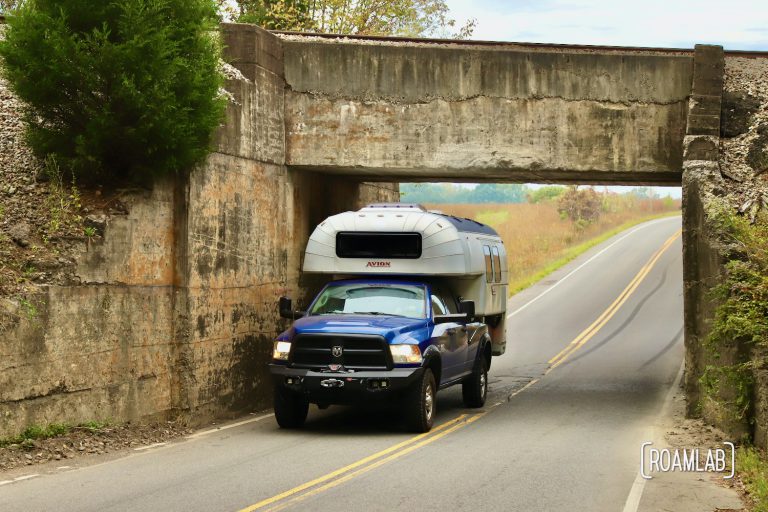
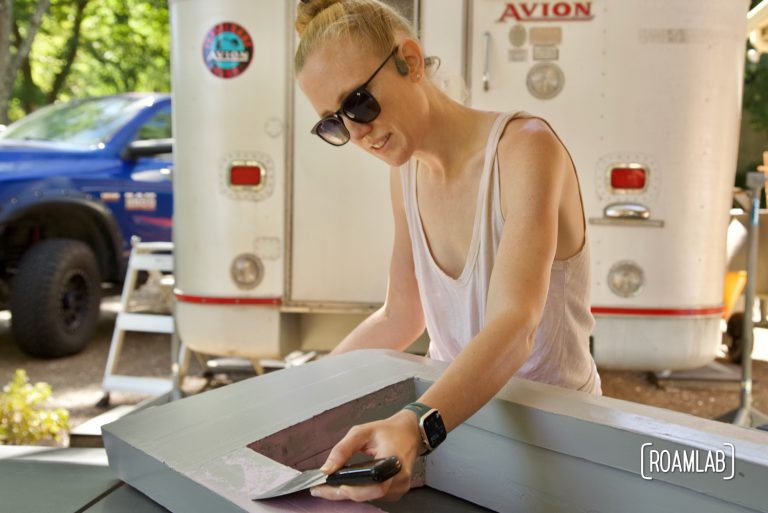
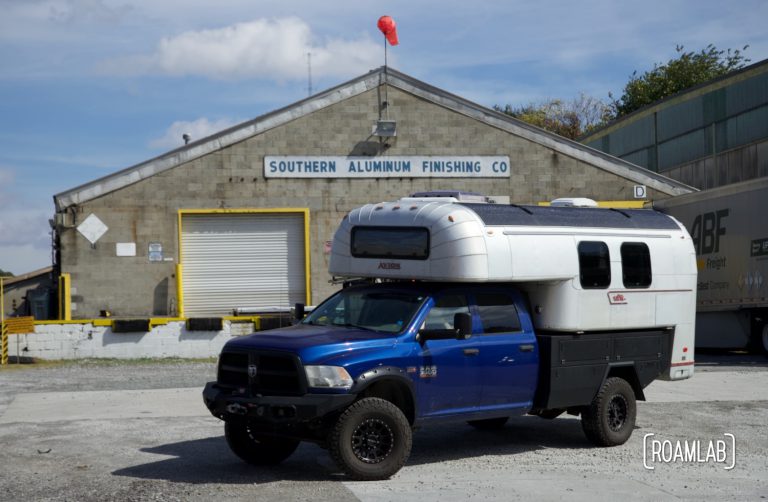
I bought four 100 watt panels from AM Solar. I have a little more flexibility because I haven’t yet installed the rear vent. I’ll have a pair of panels in front and a pair to the rear of that vent. I’ll be able to tilt them from either side of the camper if I decide it’s worth getting up on a ladder to do that. AM Solar sells the panels with mounting kits, but I made my own mounts. This allowed me to attach two panels side by side to make one squarish (about 40″ x 43″) panel. I tilted the panels slightly toward the edge of the camper so they don’t stick up as much. In other words, the two panels go together a bit like a pitched roof. The angle is about 3.5°, just enough to lower the outer edge of the panel so it will be less visible.. I haven’t installed them yet because they arrived after the cold weather and snow. Sorry, no blog post about this yet due to the weather!
I was wary of using the flexible panels because I’ve heard they don’t last as long, at least that was the experience of Tim Shephard on The VAP podcast. There is also lots of talk on Airforums about problems with flexible panels.
That sounds cool! Yeah, we have had a lot of back and forth around solid vs flexible panels. There is definitely a lot of variability in the quality and durability of flexible panels but as the technology improves it seems that opinions and conclusions are much slower to change. We are looking forward to giving it a try!